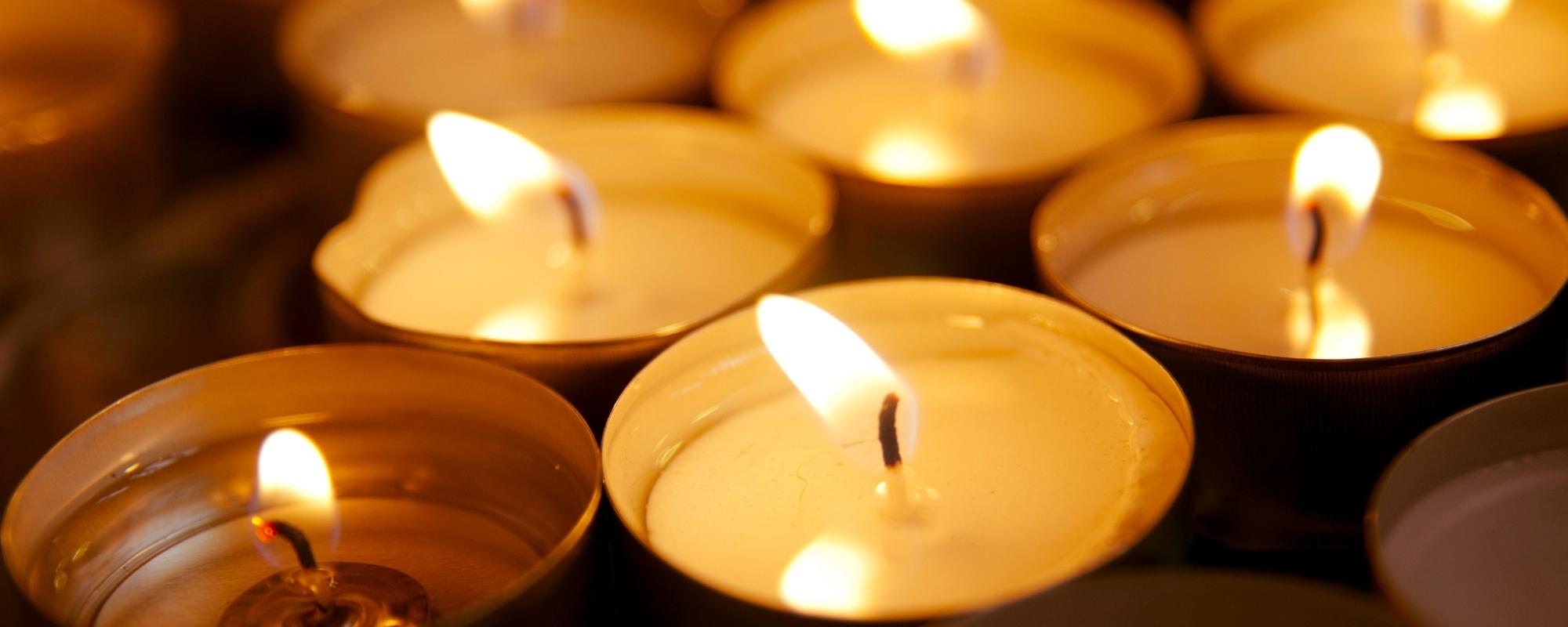
Why Do We Light a Yahrtzeit Memorial Candle?
Early Precedent
There is evidence of Jews lighting candles to honor the deceased as far back as the Mishnaic period, approximately 2,000 years ago: the Mishnah states that one cannot use the “fire of the dead” for the havdalah blessing on Saturday night because it was lit not for the living, but to honor the dead.
Additionally, we find that Rabbi Judah the Prince, who was actually the compiler of the Mishnah, commanded his household before his passing “to leave a lamp lit in its place.” Although this phrase is usually understood to refer to the Shabbat lamp, some point to this as a precedent for lighting a candle for the departed soul.
But Why?
The verse states, “The soul of man is the lamp of G‑d.” As such, the candle serves as a remembrance of the departed soul. Additionally, based on this soul-lamp comparison, there are many reasons given for lighting a candle, several of which we will touch on here.
Filling a Void
When a soul departs from this world, it leaves behind a dark void. The memorial candle serves to replenish this light.
Bringing Joy to the Soul
Rabbi Bechayei ben Asher (1255–1340) explains6 that the soul derives joy from the candle’s light. As the verse states, “The light of the righteous will rejoice.” How come? The soul is made up of divine light, and it is natural to delight in something that is of a similar makeup. This is the case even though the candle generates mere physical light, whereas the soul’s light is spiritual.
Atonement for the Soul
With regard to the custom of lighting a memorial candle before Yom Kippur, Rabbi Asher ben Yechiel (1250[?]–1327) explains that we light a candle to atone for the souls of the departed. The verse states, “For the lights honor the L‑rd.”8 When we light a candle to honor G‑d in the merit of the departed, G‑d promises to forgive and watch over their souls.
Wick and Flame: Body and Soul
On a more mystical level, a candle represents a person’s connection to the divine. The lamp, including the wick, represents the body, and the flame represents the divine soul. When a candle is lit, both the wick and the fuel combust in an upward-licking flame of light. Through learning Torah and doing mitzvahs, the body is subsumed by the soul and becomes spiritual energy.
A flame has three components: There is the inner blue (or blackish) part of the flame, which hugs the wick and consumes the oil. Then there is the bright body of the flame, which provides the light. Lastly, there’s the third level, the subtle aura that surrounds the flame. These three parts correspond to the three components of the soul that are most closely associated with the physical body: nefesh, ruach and neshamah.
(Some, including Chabad, have the custom to light five candles during prayers throughout the eleven months that kaddish is recited, as well as during prayers on the yahrtzeit, corresponding to all five levels of the soul: nefesh, ruach, neshamah, chayah and yechidah.
When to Light a Candle?
We light a candle when the soul is more present in our world.
Since the soul begins its upward journey in gradual stages (akin to an aroma that slowly dissipates), the custom developed to light the candle during the first week of shivah, when the soul is most present. And since the soul’s ascent is not completed until the end of the first year, Chabad and others keep the candle lit until the year has passed.
During the times when we are to remember the deceased, we light a candle in memory of the soul.
On these days—yahrtzeit and when Yizkor is recited—the soul has permission to travel back to this world that it left behind, so we light a candle for its delight and memory. Some, including Chabad, have the custom not to light a candle on the days Yizkor is recited, except for Yom Kippur (for then, as explained above, the souls are judged and we light in their merit).
The custom is to light the candle after sunset on the eve of the yahrtzeit. If the yahrtzeit is on Shabbat, the candle is lit before lighting the Shabbat candles. The candle should burn at least until after nightfall the next day (i.e., the end of the yahrtzeit) and should be left to burn out on its own.
If the yahrtzeit is on Sunday, then the candle should be lit after evening prayers and havdalah.
The yahrzeit, or anniversary of a loved one’s passing, is a time to remember the person, in the synagogue by reciting the kaddish prayer, through the giving of extra charity and through learning. Determine the date of your loved one’s passing for this year or any other.
[wpforms id=”883″ title=”false”]
Please pay through venmo, zelle, paypal, or check. Kindly add in your name and “Yahrtzeit Memorial Candle – Shuvah Israel” in the payment description.The ability to make payments directly on this page will be available shortly. We apologize for the inconvenience.
Venmo: @shuvaisraelpicorobertson
Paypal: donate@shuvahisrael.com
Zelle: 213-534-7271
Mail or drop off at: 8853 West Pico Boulevard, Los Angeles, CA 90035